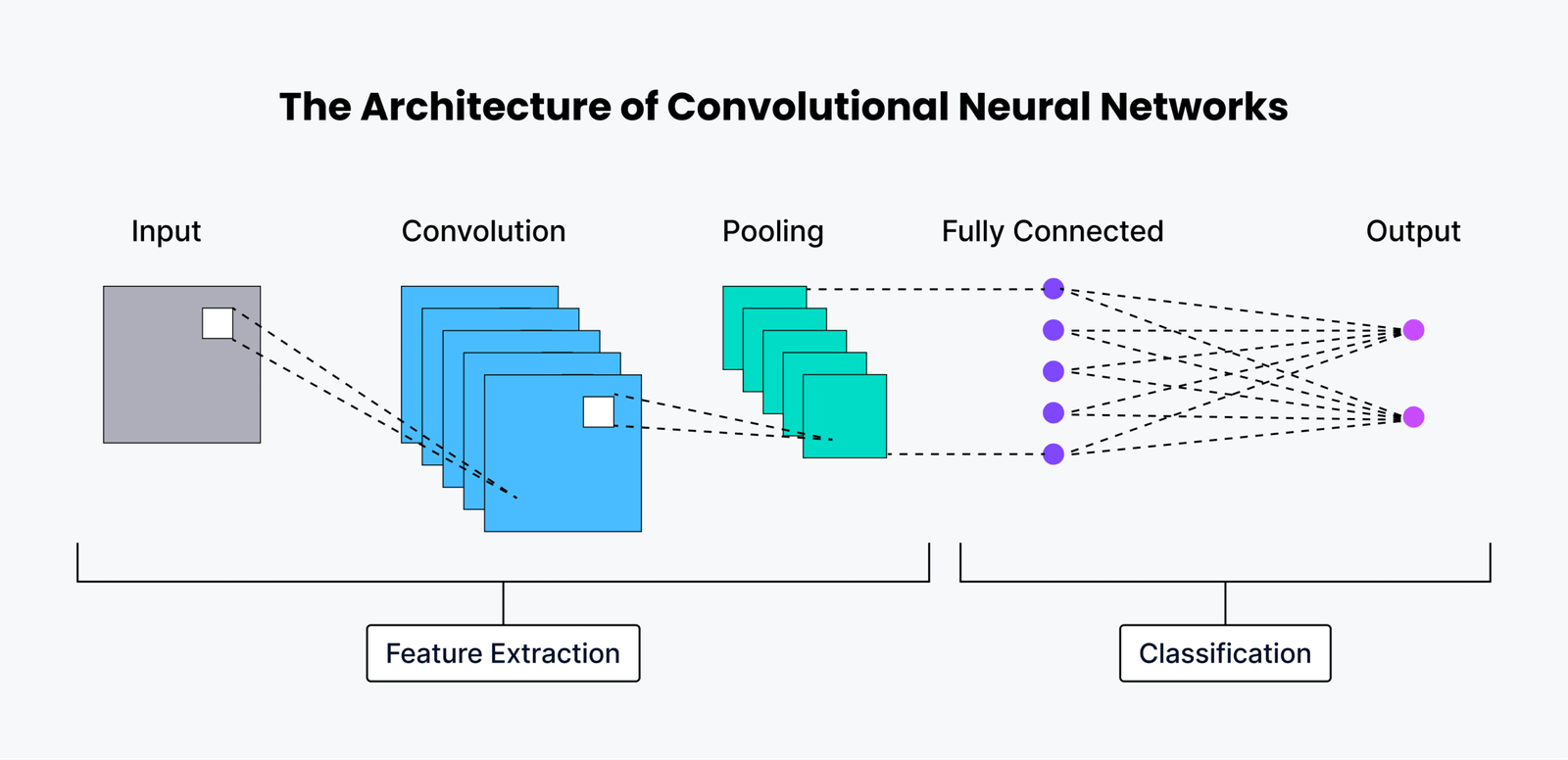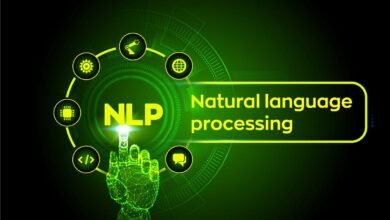Open Source AI Technology Building the Future Together
Discover how open source AI technology is revolutionizing innovation through community collaboration, transparency, and accessible

The landscape of artificial intelligence is undergoing a revolutionary transformation, driven by the power of open source AI technology. Unlike proprietary systems that operate behind closed doors, open source artificial intelligence represents a paradigm shift toward transparency, collaboration, and democratic access to cutting-edge AI capabilities. This movement is fundamentally reshaping how we approach AI development, making it possible for researchers, developers, and organizations worldwide to contribute to and benefit from shared technological advancement.
In 2025, Open Source AI Technology has reached unprecedented heights, with powerful models like DeepSeek R1, LLaMA 4, and Gemma 3 leading the charge in performance and accessibility. These community-driven AI models are not just matching their proprietary counterparts; they’re often surpassing them in specific use cases while offering unparalleled flexibility and customization options. The collaborative AI ecosystem that has emerged represents more than just shared code—it embodies a philosophy of collective innovation that accelerates progress across the entire field.
The democratization of AI through open source machine learning platforms has broken down traditional barriers to entry, enabling startups in emerging markets, academic researchers with limited resources, and individual developers to access and contribute to state-of-the-art AI technology. This transparent AI development model fosters trust, accountability, and rapid iteration cycles that benefit the entire global community. As we stand at the threshold of an AI-driven future, open source AI frameworks are proving to be the foundation upon which sustainable, ethical, and inclusive artificial intelligence will be built.
Open Source AI Technology
Definition and Core Principles
Open source AI technology refers to artificial intelligence systems, models, algorithms, and frameworks whose source code is freely available for anyone to use, modify, study, and distribute. Unlike closed-source alternatives, these systems operate under transparent development models that prioritize community collaboration and shared innovation. The core principle behind open source artificial intelligence lies in the belief that AI development benefits from diverse perspectives, collective expertise, and unrestricted access to technological resources.
The foundation of Open Source AI Technology development rests on several key pillars: transparency in algorithmic decision-making, reproducibility of research results, and the democratization of AI capabilities. This approach ensures that AI development transparency becomes a standard rather than an exception, allowing researchers and practitioners to understand, validate, and improve upon existing work. The collaborative AI ecosystem that emerges from this model accelerates innovation by leveraging the collective intelligence of global development communities.
Open source machine learning platforms have evolved to encompass everything from basic algorithmic implementations to sophisticated large language models and computer vision systems. These platforms provide the infrastructure necessary for community-driven AI innovation, enabling rapid prototyping, experimentation, and deployment of AI solutions across various domains and applications.
Historical Evolution and Current State
The journey of Open Source AI Technology frameworks began with early machine learning libraries and has evolved into comprehensive ecosystems supporting every aspect of AI development. From TensorFlow’s initial release by Google to PyTorch’s dynamic computational graphs, the Open Source AI Technology community has consistently pushed the boundaries of what’s possible in artificial intelligence research and application.
Today’s Open Source AI Technology ecosystem represents a mature and sophisticated landscape of tools, models, and platforms that rival and often exceed the capabilities of proprietary alternatives. The emergence of powerful community-driven AI models like Meta’s LLaMA family, Google’s Gemma series, and the recent breakthrough DeepSeek R1 model demonstrates the incredible potential of collaborative development approaches.
The current state of open source artificial intelligence is characterized by rapid innovation cycles, extensive community support, and growing adoption across industries. Organizations are increasingly recognizing the strategic advantages of transparent AI development, including reduced vendor lock-in, enhanced customization capabilities, and the ability to audit and modify AI systems according to specific requirements and ethical standards.
Benefits of Open Source AI Technology Development
Transparency and Trust
One of the most significant advantages of open source AI technology is the unprecedented level of transparency it provides in AI development and deployment. AI development transparency allows stakeholders to examine the inner workings of AI systems, understand their decision-making processes, and identify potential biases or vulnerabilities. This transparency is crucial for building trust in AI applications, particularly in sensitive domains such as healthcare, finance, and criminal justice.
Transparent AI development enables rigorous peer review and validation of AI models, ensuring that research claims can be independently verified and reproduced. This scrutiny leads to more robust and reliable AI systems, as the open source AI community collectively works to identify and address potential issues. The ability to inspect and modify source code also facilitates compliance with regulatory requirements and ethical guidelines, making it easier for organizations to implement responsible AI practices.
The trust factor extends beyond technical transparency to include trust in the development process itself. Community-driven AI models benefit from diverse perspectives and expertise, reducing the risk of homogeneous thinking that can lead to systemic biases or oversights. This collective approach to AI development creates a more inclusive and representative technological landscape that better serves global needs and values.
Cost-Effectiveness and Accessibility
Open source AI development significantly reduces the financial barriers to entry for AI adoption and innovation. Organizations can access state-of-the-art open source AI frameworks without the substantial licensing fees associated with proprietary solutions. This cost-effectiveness is particularly beneficial for startups, academic institutions, and organizations in developing economies that may have limited resources for AI investment.
The accessibility of open source machine learning tools democratizes AI capabilities, enabling a broader range of participants to contribute to and benefit from AI advancement. Small teams and individual developers can leverage the same foundational technologies used by major technology companies, leveling the playing field and fostering innovation across diverse contexts and applications.
Community-driven AI innovation also reduces development costs through shared resources and collaborative problem-solving. Instead of each organization independently developing similar solutions, the open source AI ecosystem enables collective effort and resource pooling, resulting in more efficient use of time, expertise, and computational resources.
Innovation and Collaboration
The collaborative AI ecosystem fostered by open source development accelerates innovation through collective intelligence and shared expertise. Open source AI community members contribute diverse perspectives, specialized knowledge, and unique use cases that drive rapid iteration and improvement of AI systems. This collaborative approach often leads to breakthrough innovations that might not emerge from isolated development efforts.
Community-driven AI models benefit from continuous refinement and optimization by contributors worldwide. The distributed nature of open source development means that improvements and bug fixes can be implemented and tested by multiple parties simultaneously, resulting in faster development cycles and more robust solutions. This collaborative model also facilitates knowledge transfer and skill development within the broader AI community.
The innovation potential of open source artificial intelligence extends beyond individual projects to encompass entire research directions and methodological approaches. By sharing research results, code implementations, and experimental data, the open source AI community collectively advances the state of the art in artificial intelligence, benefiting all participants and accelerating progress toward more capable and beneficial AI systems.
Key Open Source AI Platforms and Tools
TensorFlow: Google’s Machine Learning Framework
TensorFlow stands as one of the most influential open-source AI frameworks in the current technological landscape. Developed by Google and released to the public in 2015, TensorFlow has become a cornerstone of the open source machine learning ecosystem, providing comprehensive tools for developing, training, and deploying AI models across various platforms and devices.
The framework’s strength lies in its versatility and scalability, supporting everything from research prototypes to production-ready systems. TensorFlow’s collaborative AI ecosystem includes extensive documentation, tutorials, and community-contributed resources that make it accessible to both beginners and experienced practitioners. The platform’s support for distributed training and deployment enables organizations to scale their open source AI development efforts from proof-of-concept to enterprise-level applications.
TensorFlow’s contribution to transparent AI development includes comprehensive model interpretability tools, visualization capabilities, and debugging utilities that help developers understand and optimize their AI systems. The framework’s modular architecture allows for customization and extension, making it a preferred choice for community-driven AI innovation projects that require specialized functionality or domain-specific optimizations.
PyTorch: Facebook’s Dynamic Neural Network Library

PyTorch represents another pillar of the open source AI technology landscape, offering a dynamic and intuitive approach to neural network development. Originally developed by Facebook’s AI Research lab, PyTorch has gained significant traction in the research community due to its flexible computation graph and Pythonic interface that aligns well with the experimental nature of AI research.
The platform’s emphasis on ease of use and rapid prototyping has made it a favorite among researchers and practitioners working on cutting-edge community-driven AI models. PyTorch’s dynamic nature allows for real-time modification of network architectures during training, enabling more flexible experimentation and debugging processes that are crucial for open source AI development.
PyTorch’s contribution to the open source AI community extends beyond the core framework to include specialized libraries for computer vision (torchvision), natural language processing (torchtext), and audio processing (torchaudio). This comprehensive ecosystem supports diverse AI applications while maintaining the collaborative spirit of open source artificial intelligence development.
Hugging Face: Democratizing Natural Language Processing
Hugging Face has emerged as a transformative force in open source AI frameworks, particularly in the domain of natural language processing and large language models. The platform’s model hub hosts thousands of community-driven AI models, ranging from BERT variants to large language models like GPT implementations, making state-of-the-art NLP capabilities accessible to developers worldwide.
The Hugging Face ecosystem exemplifies AI development transparency by providing detailed model cards, training procedures, and performance metrics for each hosted model. This transparency enables users to make informed decisions about model selection and understand the capabilities and limitations of different approaches to natural language processing.
The platform’s commitment to collaborative AI ecosystem development is evident in its support for model sharing, fine-tuning tools, and integration with popular machine learning frameworks. Hugging Face’s transformers library has become a standard tool for open source machine learning practitioners working on NLP tasks, providing standardized interfaces and implementations for a wide variety of model architectures.
OpenCV: Computer Vision Excellence
OpenCV (Open Source Computer Vision Library) represents one of the most mature and comprehensive open source AI technology platforms for computer vision applications. With over two decades of development history, OpenCV has established itself as the go-to solution for image processing, computer vision, and machine learning tasks across industries and research institutions.
The library’s extensive collection of algorithms and functions covers virtually every aspect of computer vision, from basic image processing operations to advanced machine learning techniques for object detection, recognition, and tracking. OpenCV’s open source AI community has contributed to its robustness and reliability, making it suitable for both educational purposes and production deployments.
OpenCV’s role in community-driven AI innovation extends beyond traditional computer vision to include integration with modern deep learning frameworks and support for cutting-edge algorithms. The library’s cross-platform compatibility and optimization for various hardware architectures make it an ideal choice for open source AI development projects that require efficient computer vision capabilities.
Popular Open Source AI Models in 2025
Large Language Models: LLaMA, Gemma, and DeepSeek
The landscape of open source artificial intelligence in 2025 is dominated by sophisticated large language models that rival their proprietary counterparts in capability and performance. Meta’s LLaMA (Large Language Model Meta AI) family represents a significant milestone in community-driven AI models, offering powerful language and generation capabilities with transparent development processes and accessible licensing terms.
Google’s Gemma series continues the tradition of open source AI frameworks by providing high-performance language models that can be deployed across various computational environments. These models exemplify AI development transparency by including detailed documentation of training procedures, data sources, and performance benchmarks that enable researchers and practitioners to understand and build upon the work.
DeepSeek R1, developed by the Chinese startup DeepSeek, has emerged as a breakthrough open source AI technology that demonstrates the global nature of collaborative AI development. The model’s combination of efficiency, performance, and cost-effective operation has established it as a leading example of how open source machine learning can produce world-class results through community-driven innovation.
Computer Vision Models: YOLO, CLIP, and Stable Diffusion
The computer vision domain of open source AI development has seen remarkable advances with models like YOLO (You Only Look Once) for real-time object detection, CLIP for image-text, and Stable Diffusion for image generation. These models represent the pinnacle of community-driven AI innovation, combining cutting-edge research with practical applications that benefit diverse user communities.
YOLO’s evolution through various versions demonstrates how collaborative AI ecosystem development can lead to continuous improvement and optimization. Each iteration has built upon community feedback, research insights, and real-world deployment experiences to create increasingly efficient and accurate object detection capabilities.
Stable Diffusion has revolutionized image generation by making powerful diffusion models accessible through open-source AI frameworks. The model’s success illustrates how transparent AI development can democratize advanced AI capabilities, enabling artists, researchers, and developers to explore creative applications that were previously limited to proprietary systems.
Scientific and Specialized Models
The Open Source AI Technology community has developed numerous specialized models for scientific research, healthcare, finance, and other domain-specific applications. These community-driven AI models demonstrate the power of collaborative development in addressing niche requirements and specialized use cases that might not be prioritized by commercial AI providers.
AlphaFold’s open source release exemplifies how open source artificial intelligence can accelerate scientific discovery by making advanced protein structure prediction capabilities available to researchers worldwide. This transparency in AI development has enabled new research directions and collaborative projects that benefit global scientific progress.
Weather prediction models, astronomical image analysis tools, and medical diagnostic systems represent additional examples of how Open Source AI Technology machine learning platforms enable specialized communities to develop and share AI solutions tailored to their specific needs and requirements.
Community Collaboration and Development
Global Developer Communities
The strength of Open Source AI Technology lies in its vibrant global community of developers, researchers, and practitioners who collectively drive innovation and progress. These Open Source AI Technology communities span continents, cultures, and disciplines, bringing diverse perspectives and expertise to collaborative development efforts. The distributed nature of these communities enables round-the-clock development cycles and rapid response to emerging challenges and opportunities.
Community-driven AI innovation thrives on platforms like GitHub, GitLab, and specialized AI research repositories where developers share code, models, and research findings. These platforms facilitate collaborative AI ecosystem development by providing version control, issue tracking, and collaborative development tools that enable effective coordination among distributed teams.
The diversity of Open Source AI Technology community members ensures that AI development benefits from varied use cases, cultural perspectives, and problem-solving approaches. This diversity is crucial for developing AI systems that are robust, fair, and applicable across different contexts and populations, making open source artificial intelligence more inclusive and representative of global needs.
Contribution Models and Governance
Effective Open Source AI Technology development relies on well-defined contribution models and governance structures that facilitate collaboration while maintaining code quality and project direction. These frameworks establish guidelines for code contributions, review processes, and decision-making procedures that ensure community-driven AI models meet high standards of quality and reliability.
Open source AI frameworks typically employ meritocratic governance models where contributions are evaluated based on technical merit, adherence to project standards, and alignment with community goals. This approach ensures that collaborative AI ecosystem development remains focused on quality and innovation while remaining open to contributions from diverse participants.
The governance of Open Source AI Technology machine learning projects often includes steering committees, technical working groups, and community advisory boards that represent different stakeholder interests and perspectives. These structures help balance the need for technical excellence with community input and ensure that AI development transparency extends to project governance and strategic decision-making.
Funding and Sustainability
The sustainability of open source AI technology depends on diverse funding models that support long-term development and maintenance efforts. These models include corporate sponsorship, government grants, academic funding, and community contributions that collectively ensure the continued growth and evolution of open source artificial intelligence projects.
Major technology companies have recognized the strategic value of supporting open source AI development through dedicated funding programs, developer resources, and infrastructure support. This corporate investment in community-driven AI innovation creates a symbiotic relationship where companies benefit from collaborative development while contributing resources that benefit the broader community.
Academic institutions and research organizations play a crucial role in the Open Source AI Technology community’s sustainability by providing fundamental research, student contributors, and institutional support for long-term projects. This academic involvement ensures that open source machine learning development remains grounded in rigorous research methodologies and scientific principles.
Challenges and Limitations
Security and Quality Assurance
While open source AI technology offers numerous advantages, it also presents unique challenges related to security and quality assurance. The transparent nature of open source artificial intelligence means that potential vulnerabilities and weaknesses are visible to both legitimate users and malicious actors, requiring robust security practices and community vigilance to maintain system integrity.
Community-driven AI models must address quality assurance challenges that arise from distributed development processes and varying levels of contributor expertise. Establishing effective code review processes, testing frameworks, and validation procedures is essential for maintaining the reliability and trustworthiness of open source AI frameworks.
The collaborative AI ecosystem must balance openness with security considerations, implementing measures to prevent malicious contributions while maintaining the accessibility and transparency that drive Open Source AI Technology development. This balance requires sophisticated tooling, community education, and ongoing vigilance to address emerging security threats and quality issues.
Intellectual Property Concerns

Open Source AI Technology development operates within a complex landscape of intellectual property rights, patent claims, and licensing requirements that can create uncertainty for users and contributors. The legal implications of using and modifying open source machine learning systems are crucial for organizations that want to leverage these technologies while managing legal risks.
The intersection of AI development transparency with proprietary research and commercial interests creates challenges for companies that want to contribute to open source artificial intelligence while protecting their competitive advantages. Navigating these concerns requires careful consideration of licensing terms, contribution policies, and intellectual property strategies.
Patent portfolios and trade secret protections can limit the extent to which certain AI techniques and implementations can be openly shared, potentially constraining community-driven AI innovation. The open source AI community must work within these constraints while advocating for policies that support collaborative development and knowledge sharing.
Resource Requirements and Technical Barriers
Despite efforts to democratize AI through open source AI technology, significant resource requirements and technical barriers can limit participation in collaborative AI ecosystem development. Training large language models and sophisticated AI systems requires substantial computational resources that may not be accessible to all community members.
Open Source AI Technology frameworks often require specialized knowledge and expertise that can create barriers for newcomers and limit the diversity of contributors. Addressing these technical barriers through improved documentation, educational resources, and mentorship programs is essential for maintaining an inclusive open source AI community.
The computational requirements for running and training community-driven AI models can exclude participants with limited access to high-performance computing resources. Developing more efficient algorithms, supporting distributed training approaches, and providing cloud-based development platforms are important strategies for addressing these resource constraints.
Future Outlook and Trends
Emerging Technologies and Innovations
The future of open source AI technology is shaped by emerging trends toward smaller, more efficient models that can run on edge devices and personal computers. This shift toward model compression and optimization is democratizing AI capabilities by reducing the computational barriers to AI deployment and enabling new applications in resource-constrained environments.
Community-driven AI innovation is increasingly focusing on multimodal systems that integrate text, image, audio, and video processing capabilities into unified frameworks. These integrated approaches represent the next frontier of open source artificial intelligence, enabling more sophisticated and versatile AI applications that can understand and generate content across multiple modalities.
The development of specialized AI accelerators and neuromorphic computing architectures is creating new opportunities for Open Source AI Technology development that leverage novel hardware capabilities. These hardware innovations, combined with collaborative AI ecosystem development, are enabling new classes of AI applications that were previously impractical or impossible.
Industry Adoption Patterns
Enterprise adoption of Open Source AI Technology frameworks is accelerating as organizations recognize the strategic advantages of transparent, customizable, and vendor-independent AI solutions. This trend toward AI development transparency is driven by regulatory requirements, risk management considerations, and the desire for greater control over AI systems and their behavior.
Government agencies and public sector organizations are increasingly mandating the use of open source AI technology for critical applications, particularly in areas involving public safety, national security, and citizen services. This policy trend reflects growing recognition of the importance of transparent AI development for accountability and public trust.
The healthcare, finance, and education sectors are leading the adoption of community-driven AI models for applications that require high levels of transparency, auditability, and customization. These sector-specific adoptions are driving the development of specialized open source machine learning tools and frameworks tailored to industry-specific requirements and regulations.
Global Impact and Democratization
The global impact of open source artificial intelligence extends beyond technological advancement to include economic empowerment, educational opportunity, and scientific progress in developing regions. By removing barriers to AI access and enabling local innovation, Open Source AI Technology development is contributing to more equitable global technology distribution.
Educational institutions worldwide are integrating Open Source AI Technology frameworks into their curricula, preparing the next generation of AI practitioners with hands-on experience using collaborative development tools and methodologies. This educational adoption ensures that community-driven AI innovation will continue to thrive and evolve with new generations of contributors.
The democratization of AI through open source AI technology is enabling new forms of international collaboration and knowledge sharing that transcend traditional barriers of geography, language, and institutional affiliation. This global collaborative AI ecosystem is creating unprecedented opportunities for cross-cultural innovation and problem-solving that benefit humanity as a whole.
More Read: Open Source AI Technology Building the Future Together
Conclusion
Open source AI technology represents a transformative force that is fundamentally reshaping the landscape of artificial intelligence development and deployment. Through collaborative AI ecosystems, community-driven AI innovation, and transparent AI development practices, the open source movement has democratized access to cutting-edge AI capabilities while fostering an environment of shared learning and collective advancement. The success of platforms like TensorFlow, PyTorch, and Hugging Face, combined with breakthrough models like LLaMA, Gemma, and DeepSeek R1, demonstrates that open-source artificial intelligence can compete with and often surpass proprietary alternatives in both capability and innovation.
As we move forward into an increasingly AI-driven future, the principles of transparency, collaboration, and accessibility embodied by Open Source AI Technology frameworks will be essential for ensuring that artificial intelligence serves the broader interests of humanity rather than the narrow interests of a few major corporations. The global open source AI community continues to break down barriers, accelerate innovation, and build the foundation for a more inclusive and democratic AI future where the benefits of artificial intelligence are shared by all.








